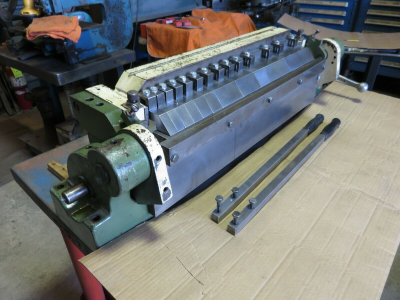The cool thing about the throatless is that you can cut pretty much any compound curve. S curves or inside corners, outside corners, it's a really versatile shear, and the Beverly is the best out there.
I like the manual machines since they are so compact for the work they do. An electric/hydraulic machine would take up significant space in my tiny workshop, but on the flip side it would likely be able to cut more than 16ga.
I was wondering how the manual machines are rated. For example little finger brakes like this are usually rated no more than 16ga...
View attachment 319060
But I assume that's a full width piece. Would a machine like this be able to do 1/8" sheet if it were only say 3" wide? Or maybe even 1/4" if it were only a 1" flat bar? I've always wondered about that. The light duty of some hand machines limit their usefulness, but what are they
really capable of?


